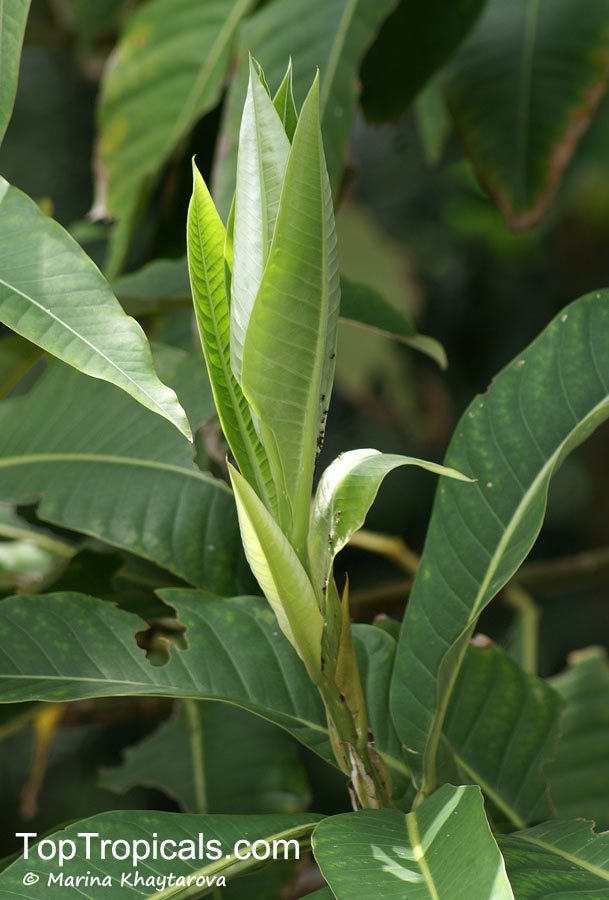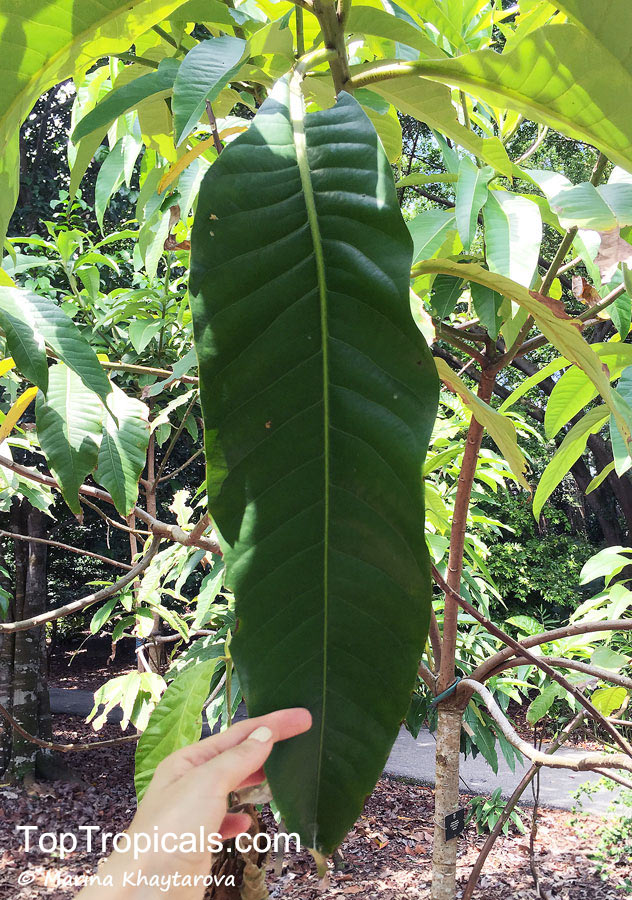Litsea garciae (Engkala)
Top Tropicals Plant Encyclopedia
Botanical names: Litsea garciae, Lepidadenia kawakamii, Litsea kawakamii, Tetradenia kawakamii
Common name: Engkala
Family: Lauraceae
Origin: Southeast Asia





Litsea garciae grows in full sun, partial shade or semi-shade and regular water. Engkala should be grown in a protected area and in warmer climates, at temperatures above 55F (13C). When kept about 10-20 feet high, the tree exudes a luxurious charm and provides evergreen foliage, blooms and fruit. In cooler climates, it is easily grown in a pot and can be brought in during winter months to protect the tree from the cold temperatures and harsh conditions.
Engkala is a small tree native to Southeast Asia, growing between 10-20 ft. Regular watering is recommended for optimal growth and development. This tropical tree has pointed, long leaves that look like the foliage of avocados. Engkala bears round fruits with thin, edible bright pink skin of around 35-45 mm in diameter, with a flatten top and bottom. The flesh is medium to thick and creamy-white, with a single, avocado-like seed located in the middle. The flesh has a softer, delicate flavor and can be eaten raw or used to make various dishes, much like avocados. Litsea seeds are a source of fat and are used in the production of candles and soap.
Engkala fruit has numerous mild health benefits. Eating a handful of them can supply the body with essential vitamins, minerals, and antioxidants. It is a good source of Vitamin C, Vitamin A, Potassium, Iron, and Folate. The antioxidants in the fruit help to protect the body's cells against damage caused by free radicals and also help reduce inflammation. A single mature tree can produce around 100 fruits per season, providing a good source of fresh fruits for the family.


